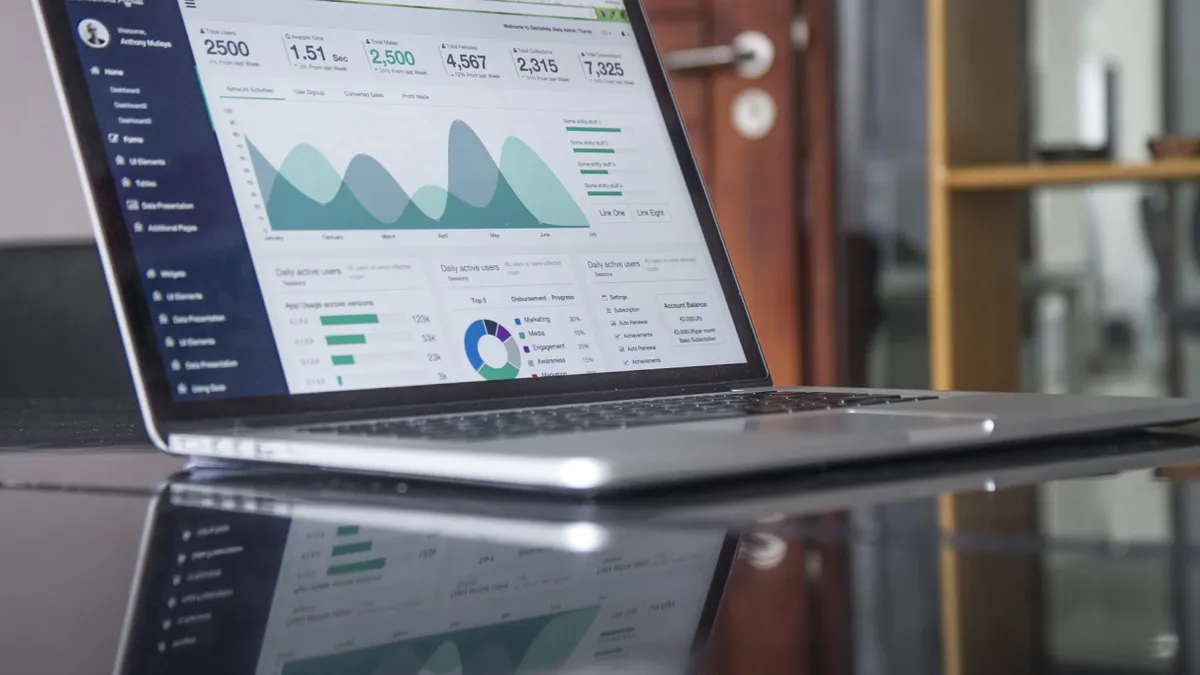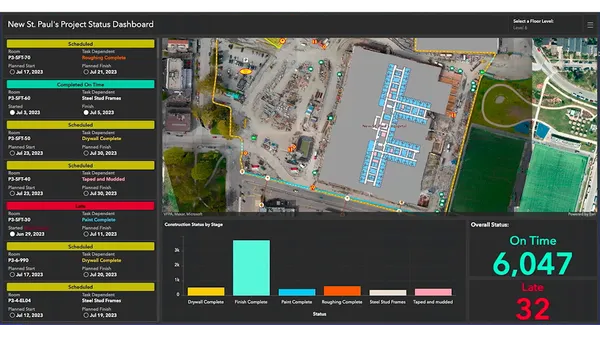Hard numbers and facts are often what precipitate and drive change. Shakers in the construction industry, for example, know well the 2017 McKinsey study that blames a $1.6 trillion gap in potential earnings mainly on the industry’s reluctance to adopt new technology that could help bridge that.
And in the name of data, practitioners agree that once a particular technology is in place, it must show demonstrable benefits through actual metrics. “Anecdotal stories don’t drive change,” said David Wilkinson, senior industry strategy manager at Autodesk, on a recent media call. “This is the era of big data and big data will drive decisions and change. How will we drive performance in an industry that doesn’t really have performance metrics?”
Wilkinson asserts that once the industry has benchmarks, it can better see opportunities to drive it forward. “Without performance indicators, we’ll continue to be average,” he said. “We need objective standards to understand what ‘good’ looks like.”
7 process-based indicators
With those questions in mind, Autodesk recently commissioned Dodge Data & Analytics to identify and quantify seven key performance indicators (KPIs) of construction. Steve Jones, senior director, industry insights, at Dodge Data & Analytics, said that because construction is based on bids and projects, rather than on production or products, it is “notoriously difficult to effectively manage performance.”
What, then, is worth measuring, that is valuable to reducing risk and improving performance? And, further, how do companies establish forward-looking KPIs, rather than the more common backward-looking ones that are reactive rather than proactive?
Dodge’s study narrowed down a list of seven process-based KPIs that are based on project processes that take advantage of what data companies are already capturing. That data then can be analyzed and turned into useful knowledge to create predictive analytics.
The seven KPIs of construction are:
-
Problems discovered in construction documentation
-
Logging requests for information (RFIs) and responses
-
Documenting change orders
-
Updating the project schedule
-
Software for safety and inspections
-
Labor productivity
-
Quality and close-out
Jones says that the proliferation of technology in construction is making data more available and visible than ever before. Too much data, however, can be distracting, especially in an industry where data literacy isn’t well developed.
Of the approximately 200 surveyed companies, the study found adoption of the KPIs is quite low — only slightly more than 50% of companies are applying them to more than half of their projects. It also found that in most cases, smaller firms were more likely to capture data than larger ones. The reason for that? Jones hypothesizes that while larger companies often are more willing to try things on a pilot basis, smaller ones usually are more successful at implementing policies and practices consistently.
Although technology can capture data to gain insights and measurements, measuring alone isn’t enough. Those metrics must work together with looking for correlations between activities, such as RFIs and change orders or RFIs and schedule, so that companies can gain a better understanding of what precisely is causing roadblocks on projects.
You can’t manage what you don’t measure
Jit Kee Chin, executive vice president and chief data officer at Suffolk Construction, calls herself an outsider to the industry, having earned her doctorate in physics at MIT, then doing management consulting at McKinsey & Co. before ultimately assuming her role with Suffolk 18 months ago.
“I was struck by the huge potential data has to change the way we build,” she said. “What you haven’t measured, you can’t manage.”
Chin believes that one reason construction productivity isn’t getting better is because it isn’t making use of historical data. Whereas most industries learn from the past to drive continuous improvement, construction as a whole neglects to do so.
Transparency in KPIs also is vital, and not just at the management level, but also on the jobsite so that they can drive decision-making and action in near real time. She also mentioned the importance of having forward-looking, rather than backward-looking, KPIs.
As a general contractor, one of Suffolk’s major roles is to manage risk related to safety, time, cost and quality, among other things. “With more information, we can better manage that risk and deliver a better outcome for the owner,” Chin said.
She also asserts that in time, having transparent KPIs won’t be optional — it’ll be necessary to win bids. “Prospective clients will come to expect access to KPI-based performance data and use that information to make hiring and contract decisions,” she said.
Observation-based metrics
Josh Kanner, founder and CEO of Smartvid.io, together with Chin, teamed up to study just how technology and data can work in tandem to measure KPIs. Kanner has been in the construction industry for more than 14 years and during that time he says the industry has moved “light years ahead” as it relates to digitization. “The industry is in the best position it’s ever been to harness the power of data,” he said.
His company, which Autodesk invested in in 2017, analyzes data gathered from systems such as Autodesk’s and technology such as site cameras to then make observations on a project and distill those into benchmarking reports. Smartvid.io fully integrates with Autodesk’s BIM 360 platform and within 90 seconds of the systems syncing, data — including photos, project data and potential issues — flows in, which an artificial intelligence-powered engine dubbed Vinny analyzes to create an automated risk inspection report.
Vinny, for example, can pick up the number of workers wearing personal protective equipment and can automatically measure that metric each day to provide a summary of statistics to management, safety and project teams. Should a more specific question arise, the user can click through the data Vinny used to generate that report.
“In many industries, the use of those kind of observation-based metrics are now complemented with predictive metrics that tell you what will happen, not just what is happening already,” Kanner said, adding how sorely construction needs observation-based KPIs.
“We built a predictive model for if risk safety incidents will happen on jobsites,” that can both track observation and project potential pending risks, he continued. “It makes it immediate, actionable and gets safety management focused on those projects that have the highest risk of something happening.





















